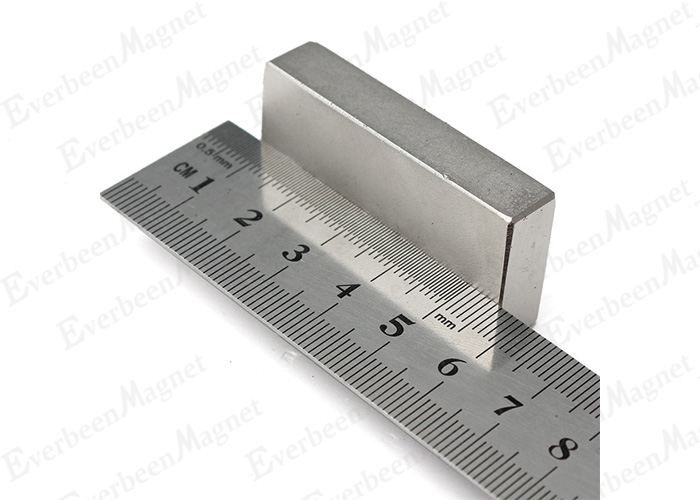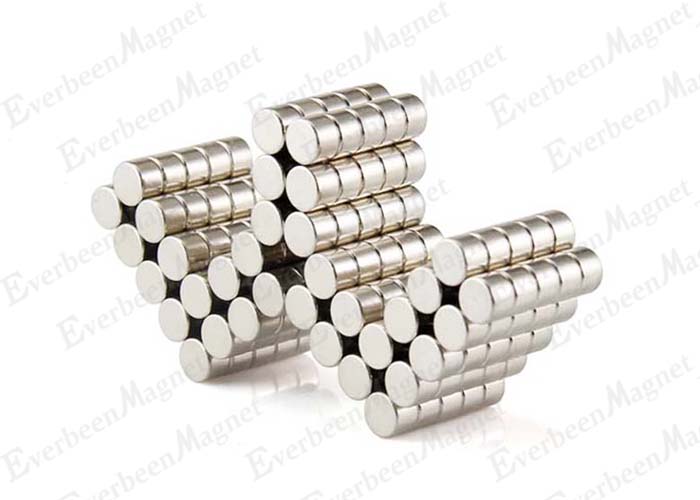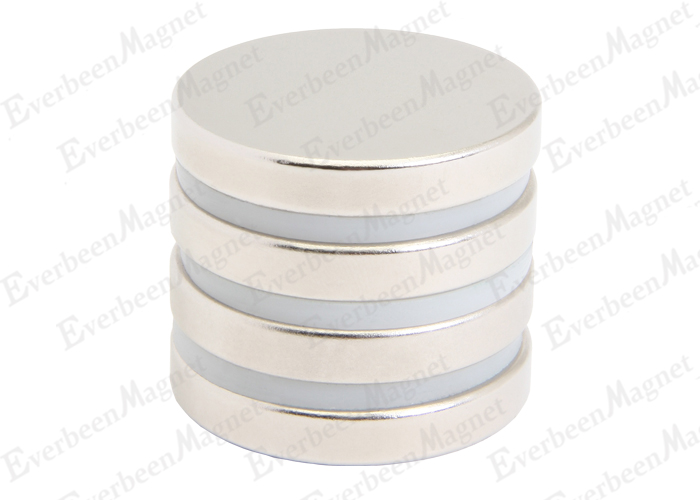First, the origin of material magnetism
If the magnet is an electromagnetic vortex, a magnet, and does not see any eddy of the electromagnetic ether, why is there magnetism? Our answer is: the magnetic properties of matter originate from the motion of electrons in the atom, and the movement of electrons produces an electromagnetic ether. vortex.
To explain the phenomenon of Permanent magnets and magnetization, Ampere proposed a molecular current hypothesis. The Everbeen neodymium magnet believes that there is a ring current in the molecule of any substance, called molecular current, and the molecular current is equivalent to a unitary magnet. When the substance does not have magnetism at the macroscopic level, the orientations of these molecular currents are irregular, and the magnetic effects generated by the outside cancel each other out, so that the entire object is not magnetic. Under the action of an external magnetic field, each molecular current equivalent to the elementary magnet will tend to be oriented in the direction of the external magnetic field, causing the object to exhibit magnetism.
The rotation of electrons around a nucleus in a circular orbit and the spin motion around itself produce electromagnetic eddy of the electromagnetic ether. Magnetic moments are commonly used to describe magnetism. Therefore, electrons have a magnetic moment, which consists of the orbital magnetic moment of the electron and the spin magnetic moment. In the crystal, the orbital magnetic moment of electrons is affected by the crystal lattice, its direction is changed, and a joint magnetic moment cannot be formed, and there is no magnetic effect externally. Therefore, the magnetic properties of matter are not caused by the orbital magnetic moment of electrons, but mainly by the spin magnetic moment. The approximate value of each electron spin magnetic moment is equal to one Bohr magnet. Is the unit of atomic magnetic moment, . Because the atomic nucleus is about 2000 times heavier than electrons, and its movement speed is only a few thousandth of the electron velocity, the magnetic moment of the nucleus is only a few thousandth of the electron, which can be neglected.

Second, the classification of material magnetism
1, diamagnetic
When the magnetization M is negative, the solid exhibits diamagnetism. Metals such as Bi, Cu, Ag, and Au have such properties. In an external magnetic field, the magnetic induction inside the magnetized medium is smaller than the magnetic induction M in the vacuum. The magnetic moment of the atom (ion) of the diamagnetic substance should be zero, that is, there is no permanent magnetic moment. When the diamagnetic material is placed in an external magnetic field, the external magnetic field changes the electron orbit and induces a magnetic moment opposite to the direction of the external magnetic field, which is expressed as diamagnetism. Therefore, diamagnetism is derived from changes in the state of the electron orbit in the atom. The diamagnetic resistance of the diamagnetic material is generally very weak, and the magnetic susceptibility H is generally about -10-5, which is a negative value.
2, paramagnetic
The main feature of paramagnetic materials is that there is a permanent magnetic moment inside the atom whether or not the applied magnetic field is present. However, in the absence of an external magnetic field, due to the irregular thermal vibration of the atoms of the paramagnetic substance, macroscopically, there is no magnetism; under the action of an external magnetic field, the magnetic moment of each atom is relatively regularly oriented, and the substance exhibits extremely weak magnetic properties. The magnetization is consistent with the direction of the external magnetic field, is positive, and is strictly proportional to the external magnetic field H.
Everbeen neodymium magnet
The magnetic properties of paramagnetic materials depend on temperature in addition to H. Its magnetic susceptibility H is inversely proportional to the absolute temperature T. In the formula, C is called the Curie constant, depending on the magnetization of the paramagnetic substance and the magnitude of the magnetic moment.
The magnetic susceptibility of paramagnetic materials is generally small, and H is about 10-5 at room temperature. Generally, atoms or molecules containing an odd number of electrons, such as transition elements, rare earth elements, steel elements, and metals such as aluminum and platinum, which are not filled with shells, are paramagnetic substances.

Everbeen neodymium magnet
3, ferromagnetism
For materials such as Fe, Co, Ni, etc., the magnetic susceptibility can reach the order of 10-3 at room temperature, and the magnetic properties of such materials are called ferromagnetism.
Ferromagnetic materials can obtain extremely high magnetization even in a weak magnetic field, and retain strong magnetic properties when the external magnetic field is removed. The magnetic susceptibility is a positive value, but when the external field is increased, since the magnetization rapidly reaches saturation, its H becomes small.
The ferromagnetism of ferromagnets is only exhibited below a certain temperature. Exceeding this temperature, the spontaneous magnetization becomes zero and the ferromagnetism disappears due to the thermal orientation of the material destroying the parallel orientation of the electron spin magnetic moment. This temperature is called the Curie point. Above the Curie point, the material exhibits strong paramagnetism, and its relationship between magnetic susceptibility and temperature obeys Curie-Sius's law, where C is the Curie constant.
4, antiferromagnetic
Antiferromagnetic means that the electron spins are arranged in antiparallel. In the same sublattice, there is spontaneous magnetization, and the electron magnetic moments are arranged in the same direction; in different sublattices, the electron magnetic moments are arranged in the reverse direction. The spontaneous magnetization in the two sublattices is the same in magnitude and opposite in direction to the entire crystal. Antiferromagnetic materials are mostly non-metallic compounds such as MnO.

Everbeen neodymium magnet
No spontaneous magnetization of the antiferromagnetic material can be observed at any temperature, so the macroscopic property is paramagnetic, M and H are in the same direction, and the magnetic susceptibility is positive. When the temperature is high, it is extremely small; the temperature is lowered and gradually increases. At a certain temperature, the maximum value is reached. It is called the Curie point or the Neil point of the antiferromagnetic substance. The explanation for the existence of the Neil point is that at very low temperatures, the magnetic moment is almost completely canceled due to the complete reversal of the spin of the adjacent atoms, so the magnetic susceptibility is almost close to zero. When the temperature rises, the effect of the spin reversal is weakened and increased. When the temperature rises above the Neil point, the influence of the thermal turbulence is large, and the antiferromagnetic body has the same magnetization behavior as the paramagnetic body.